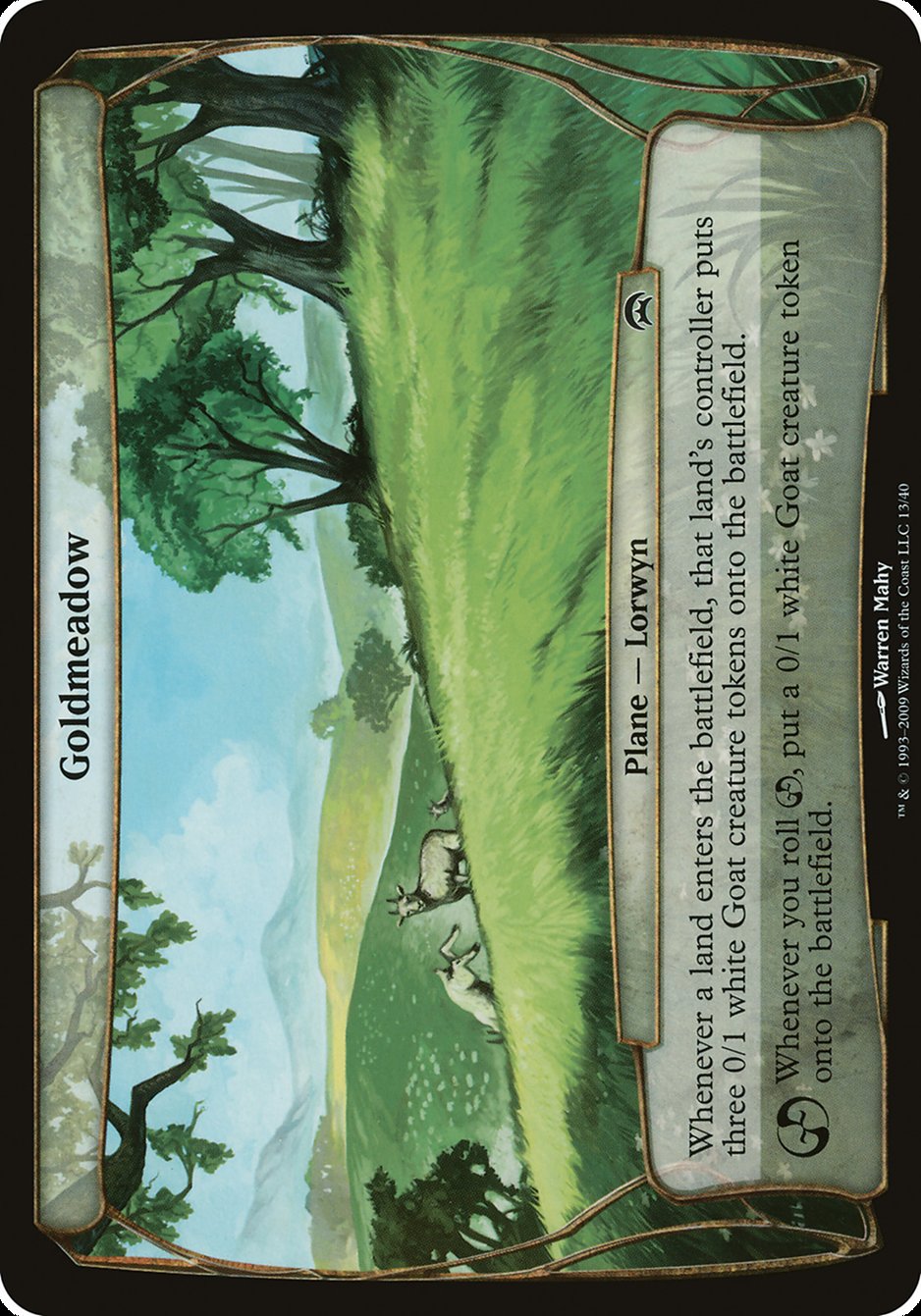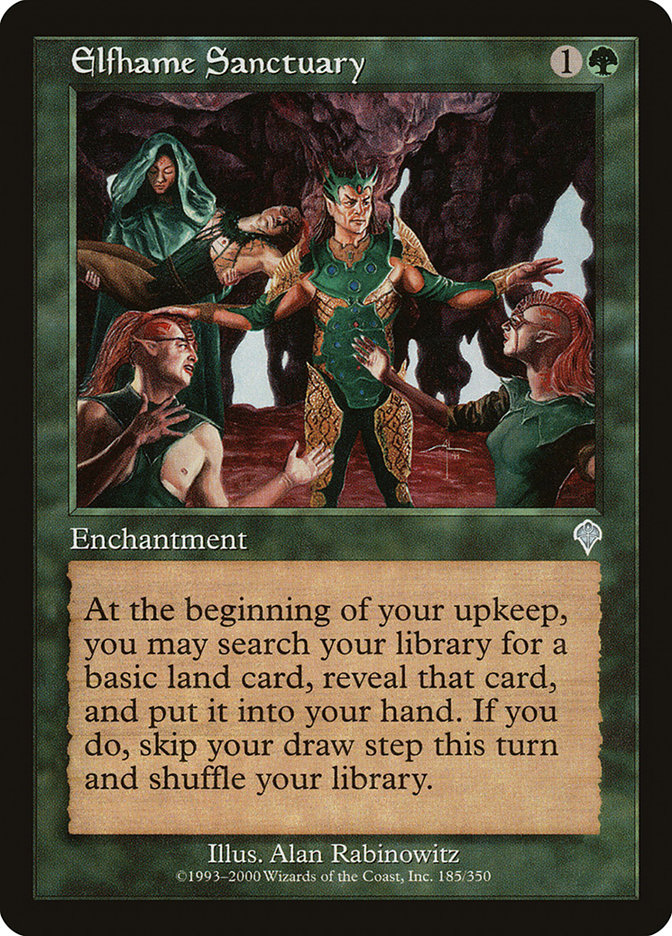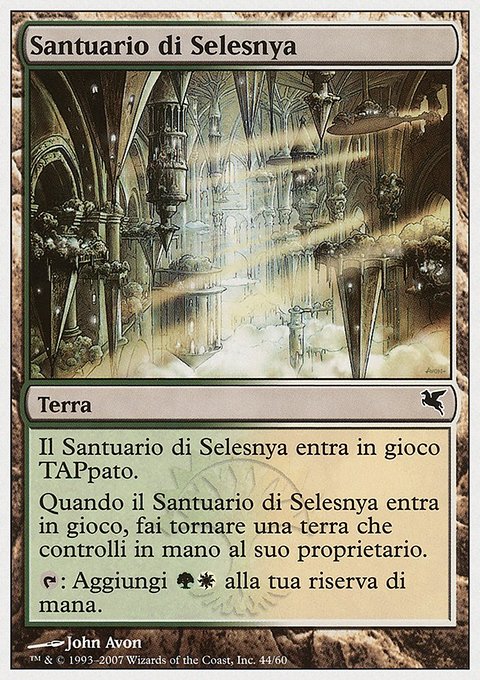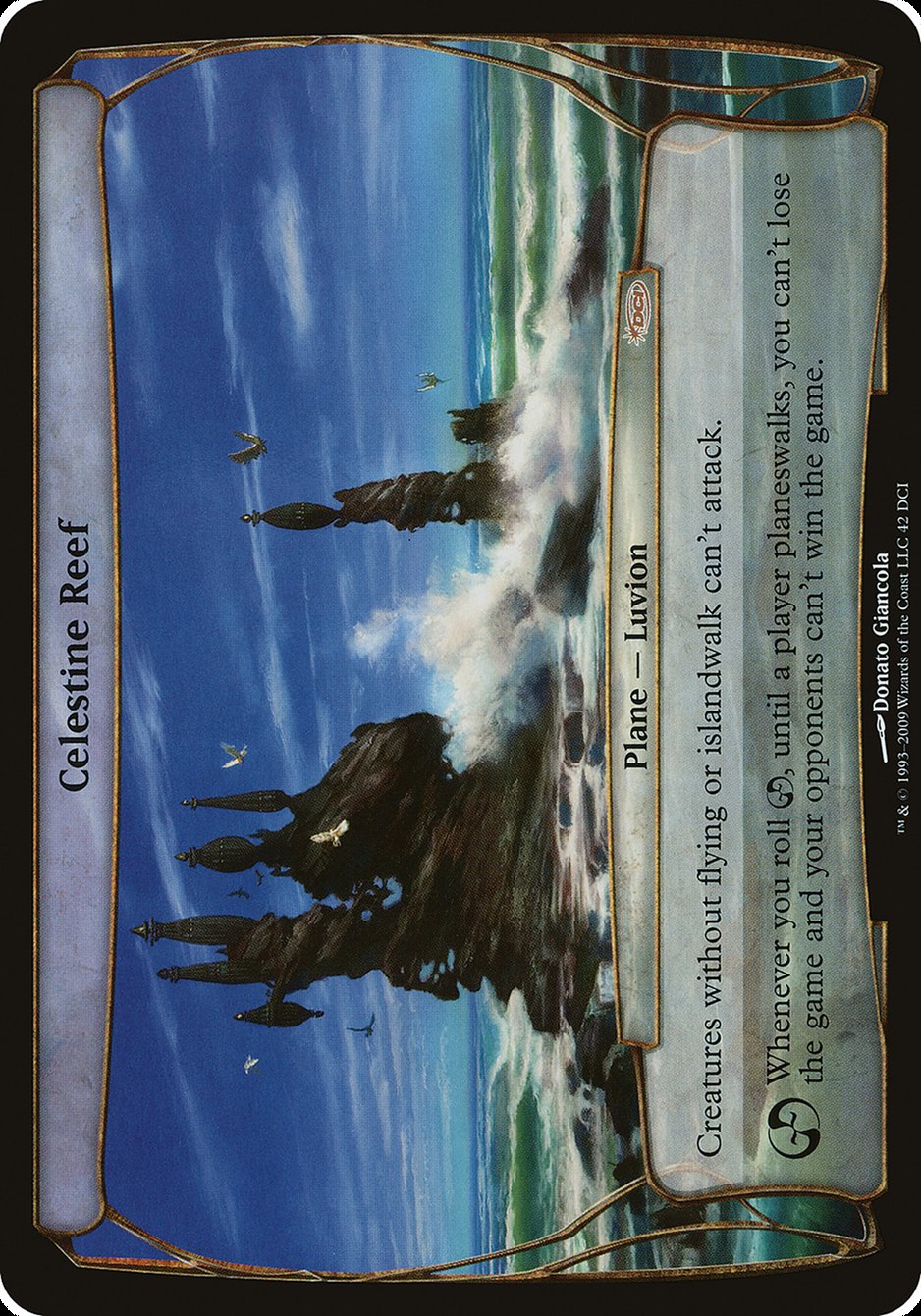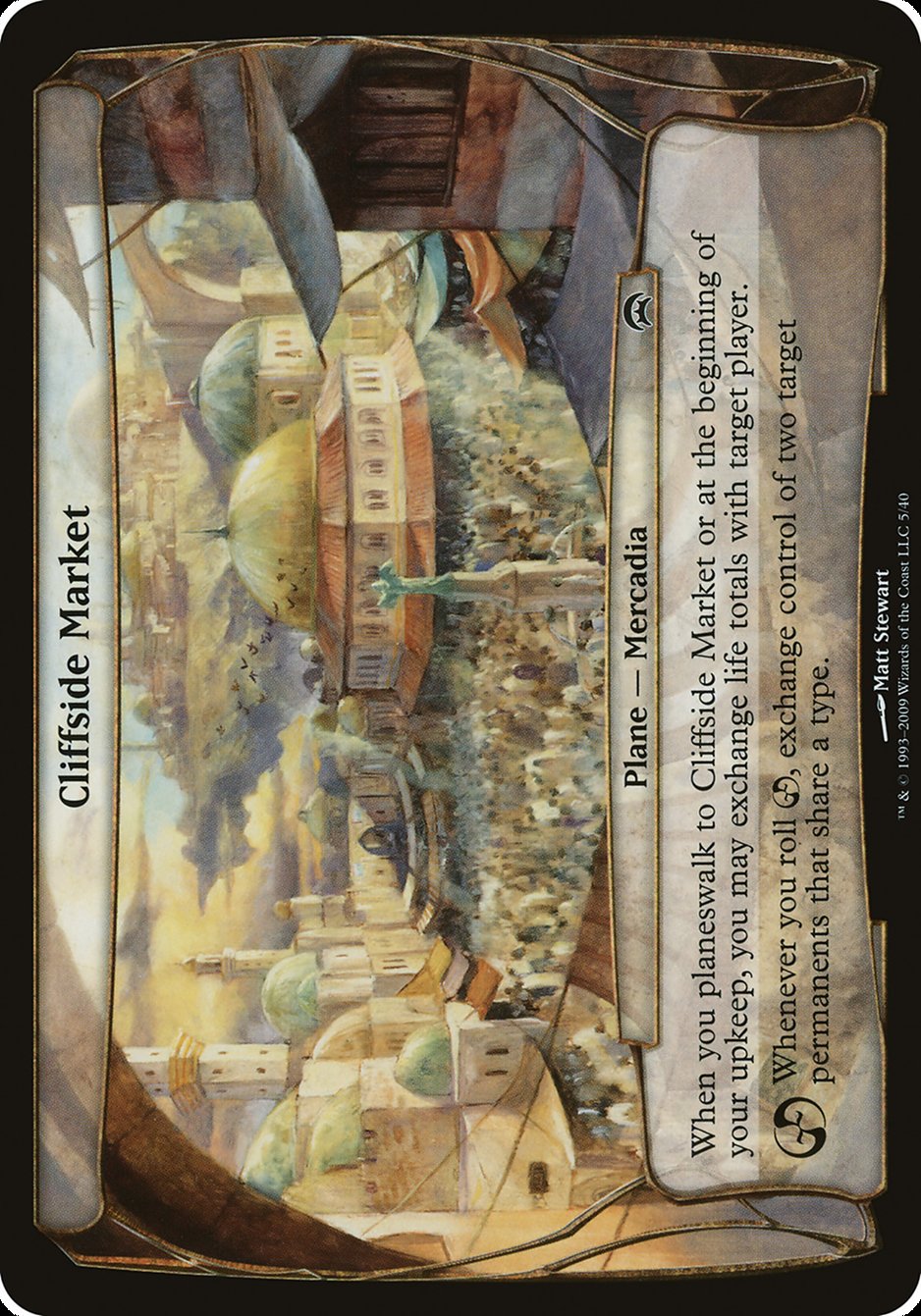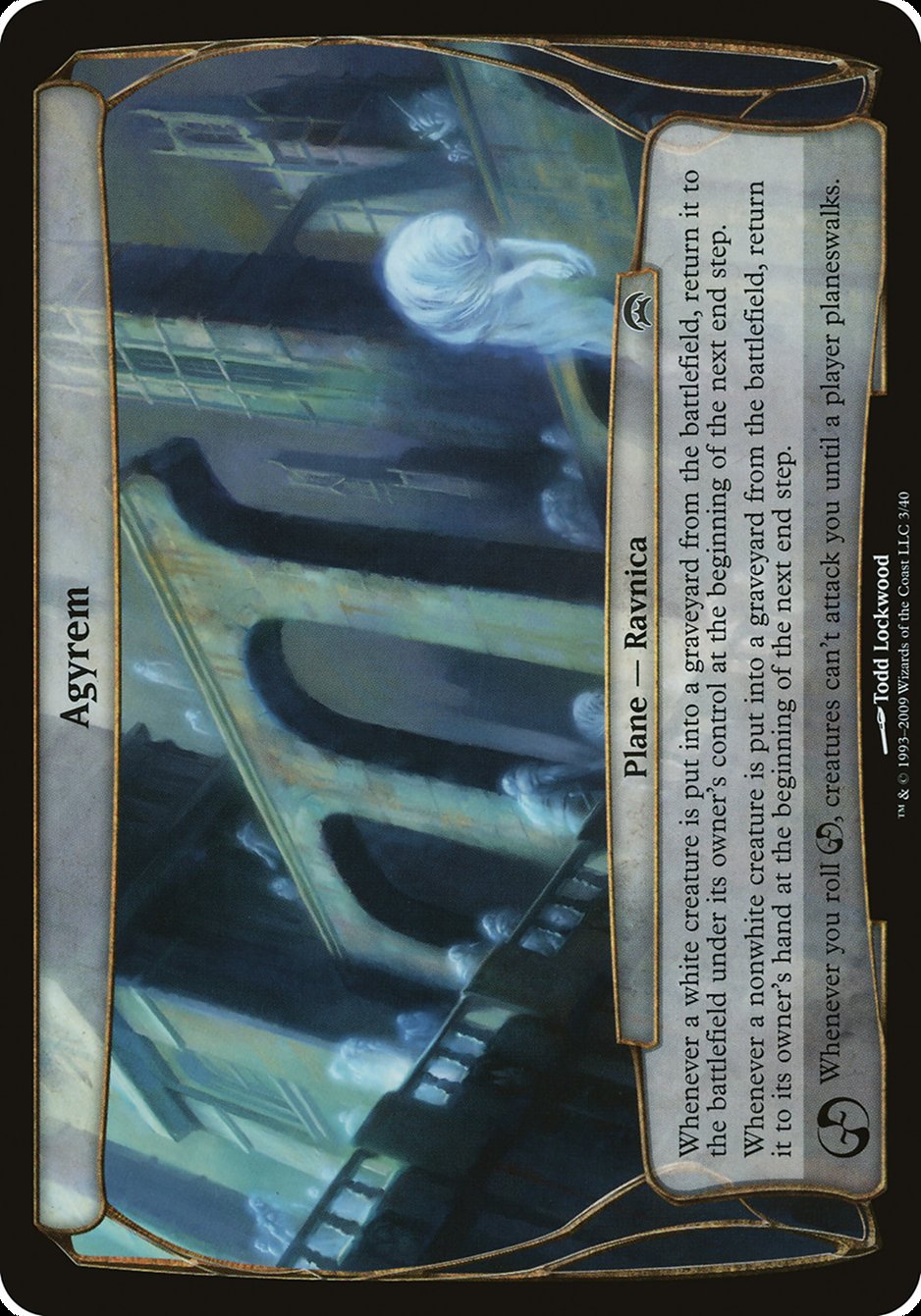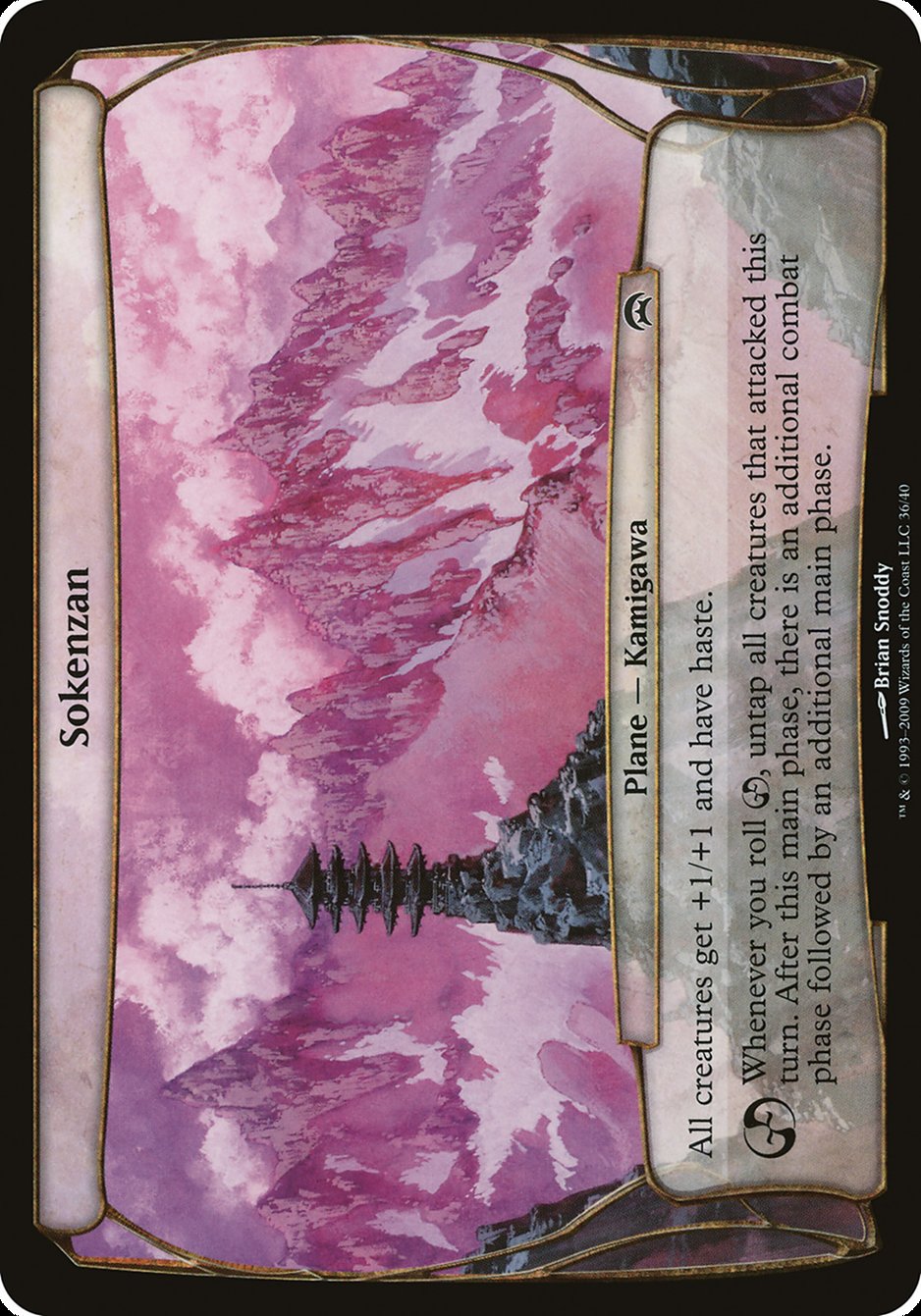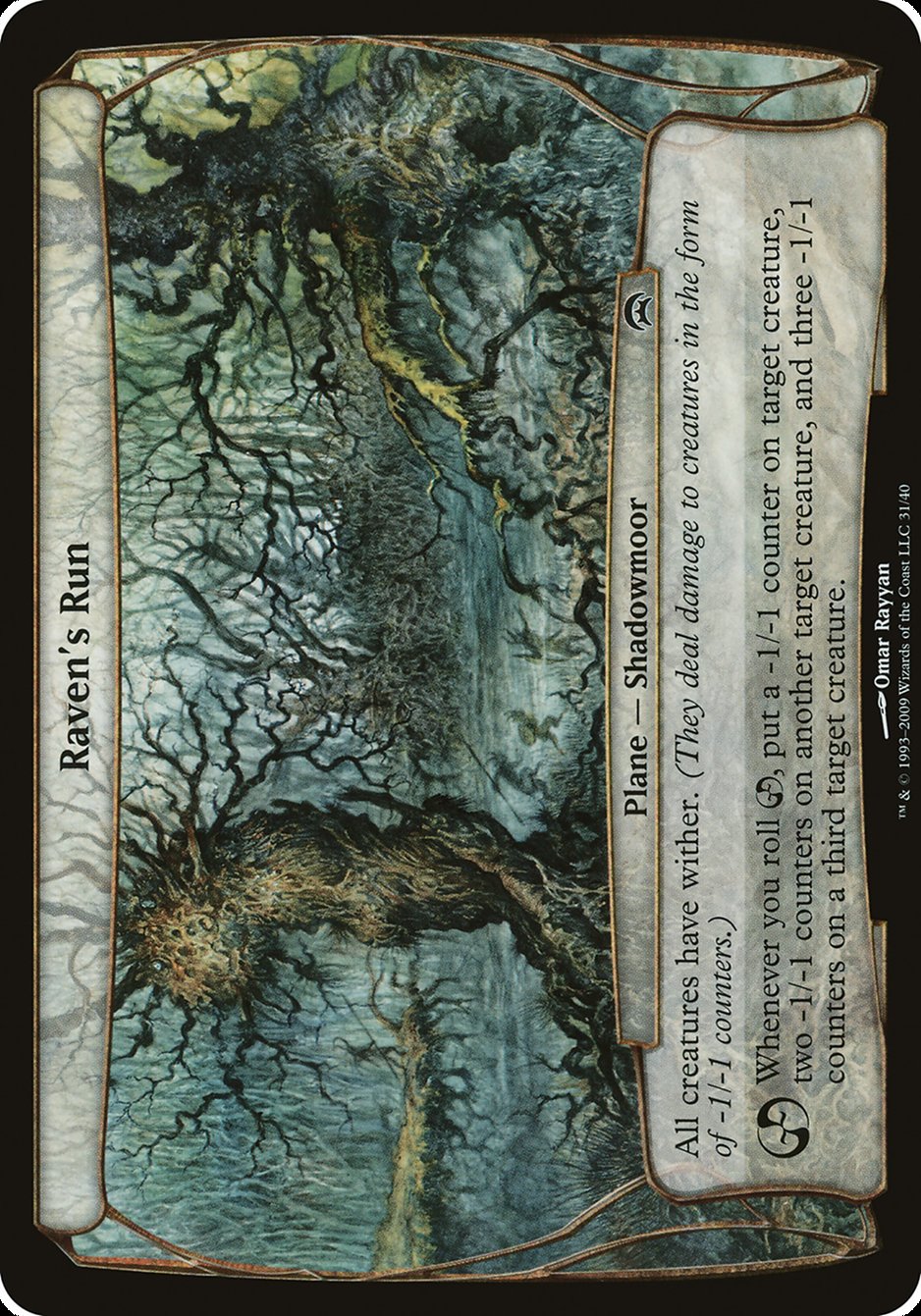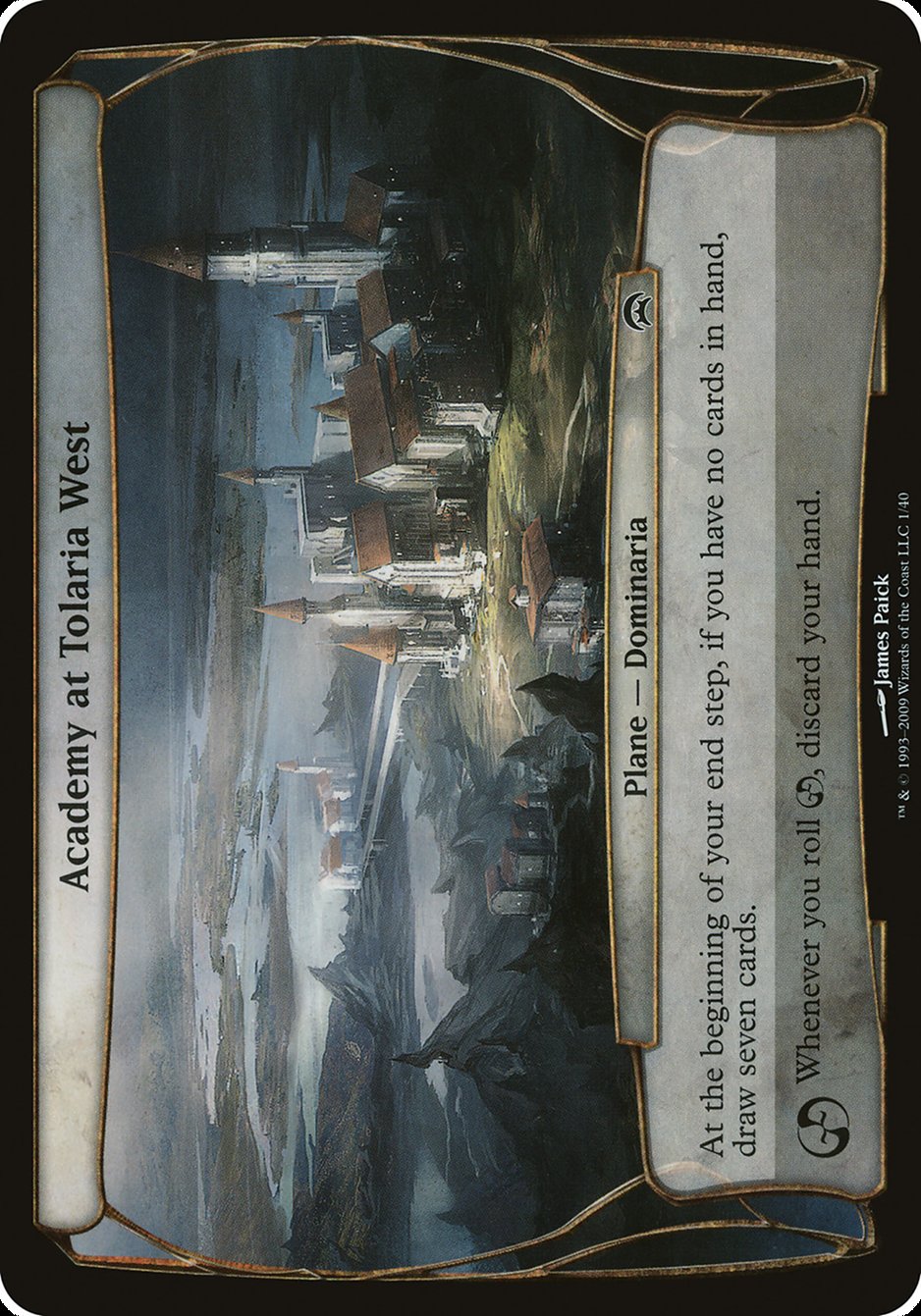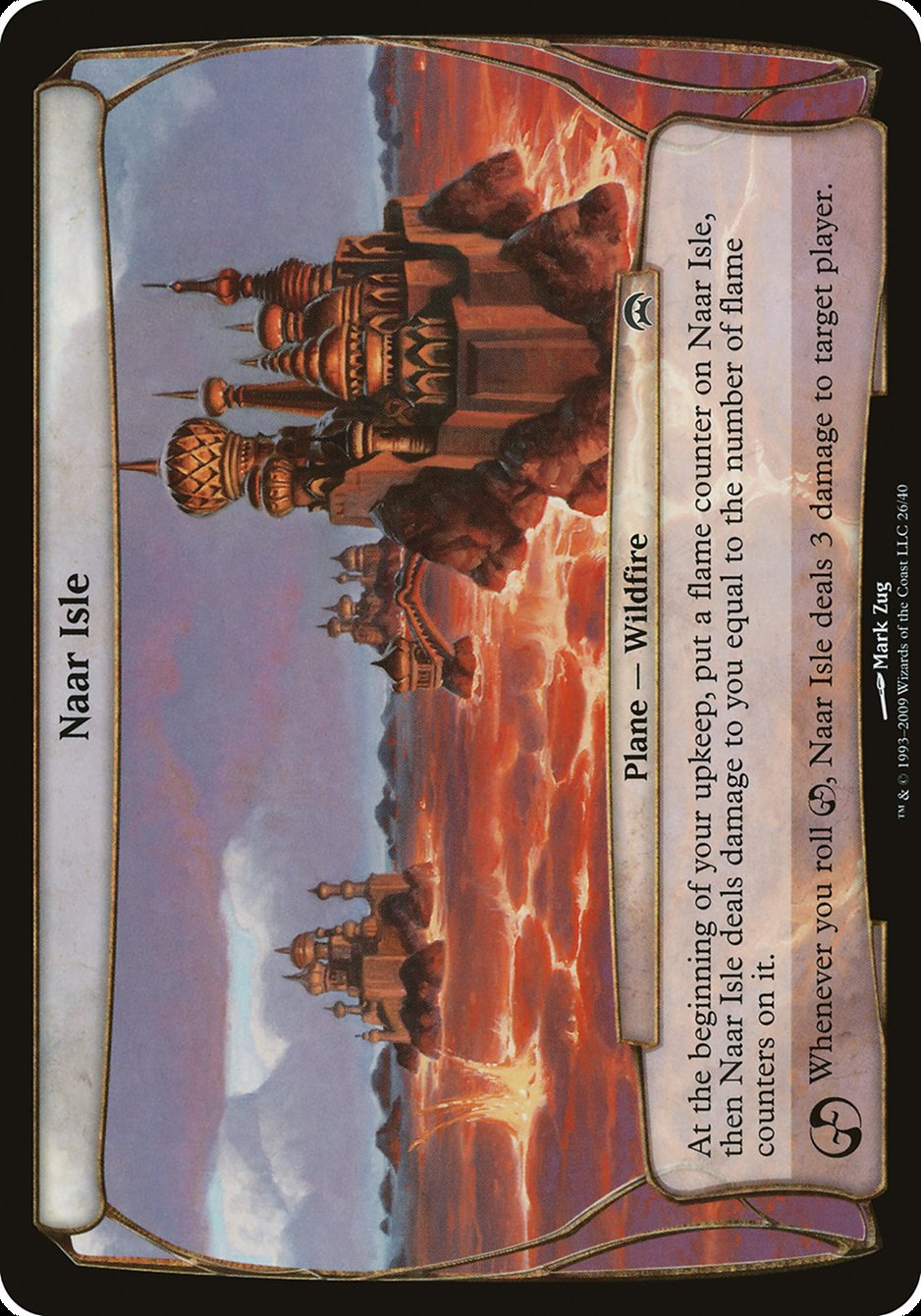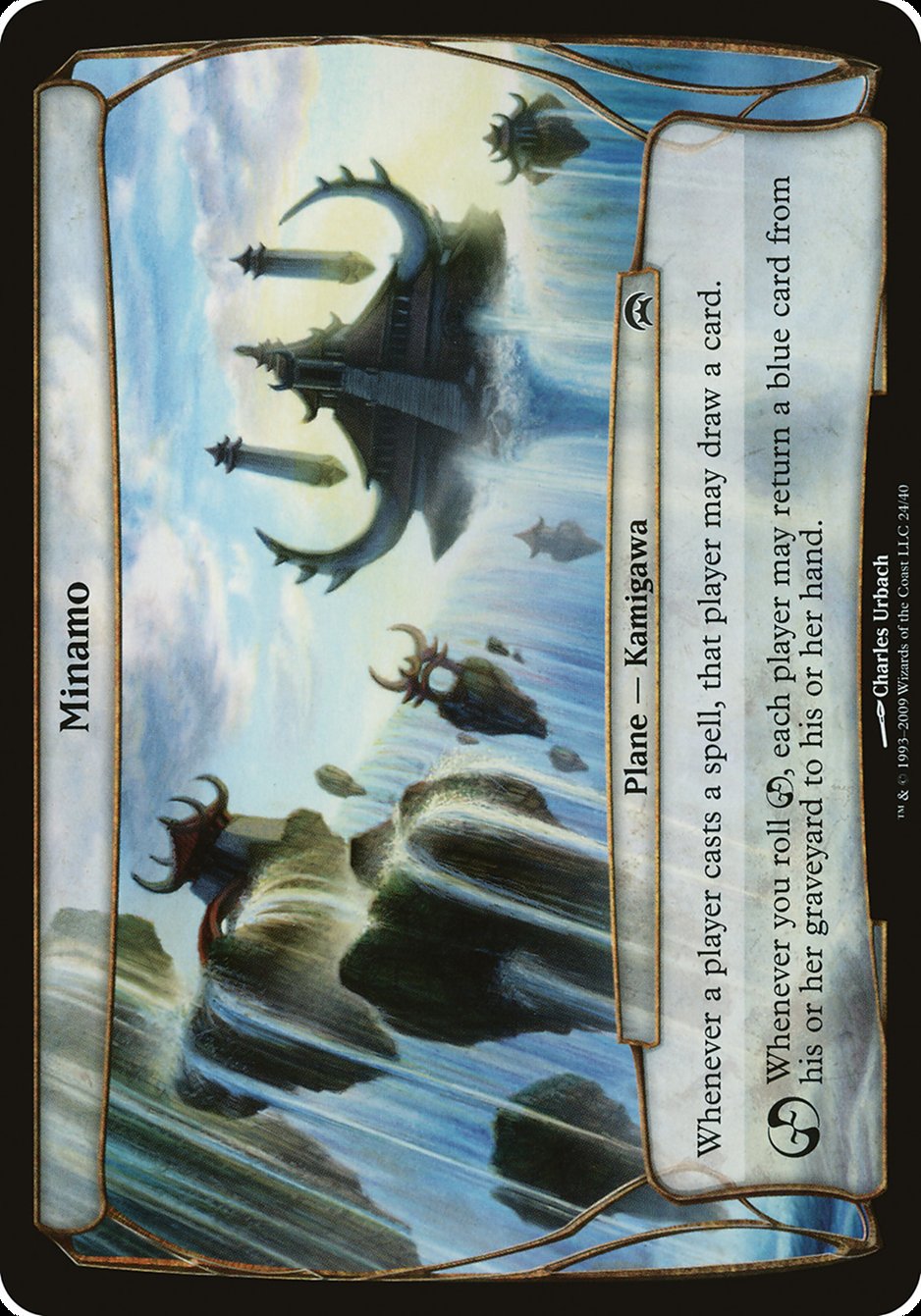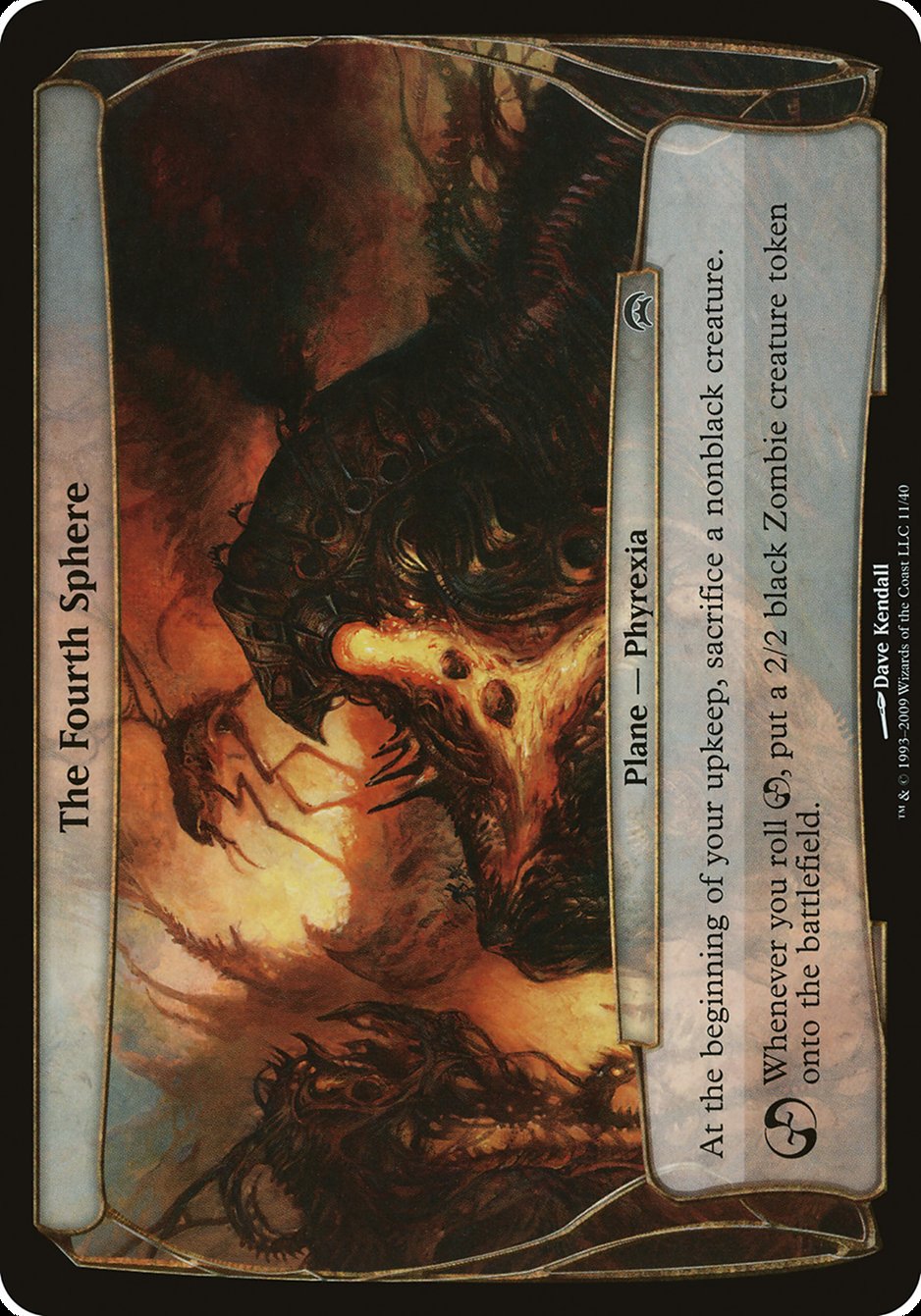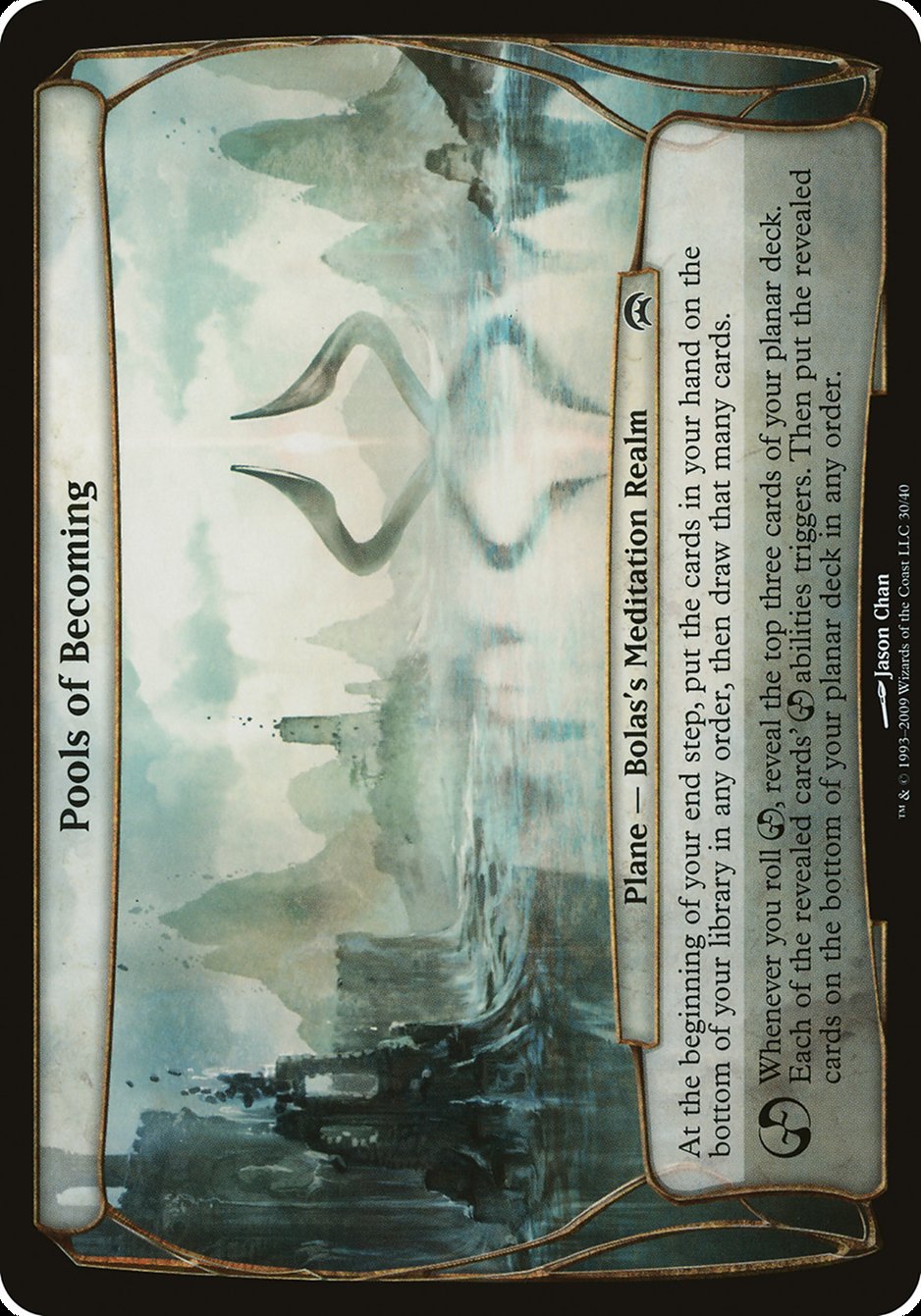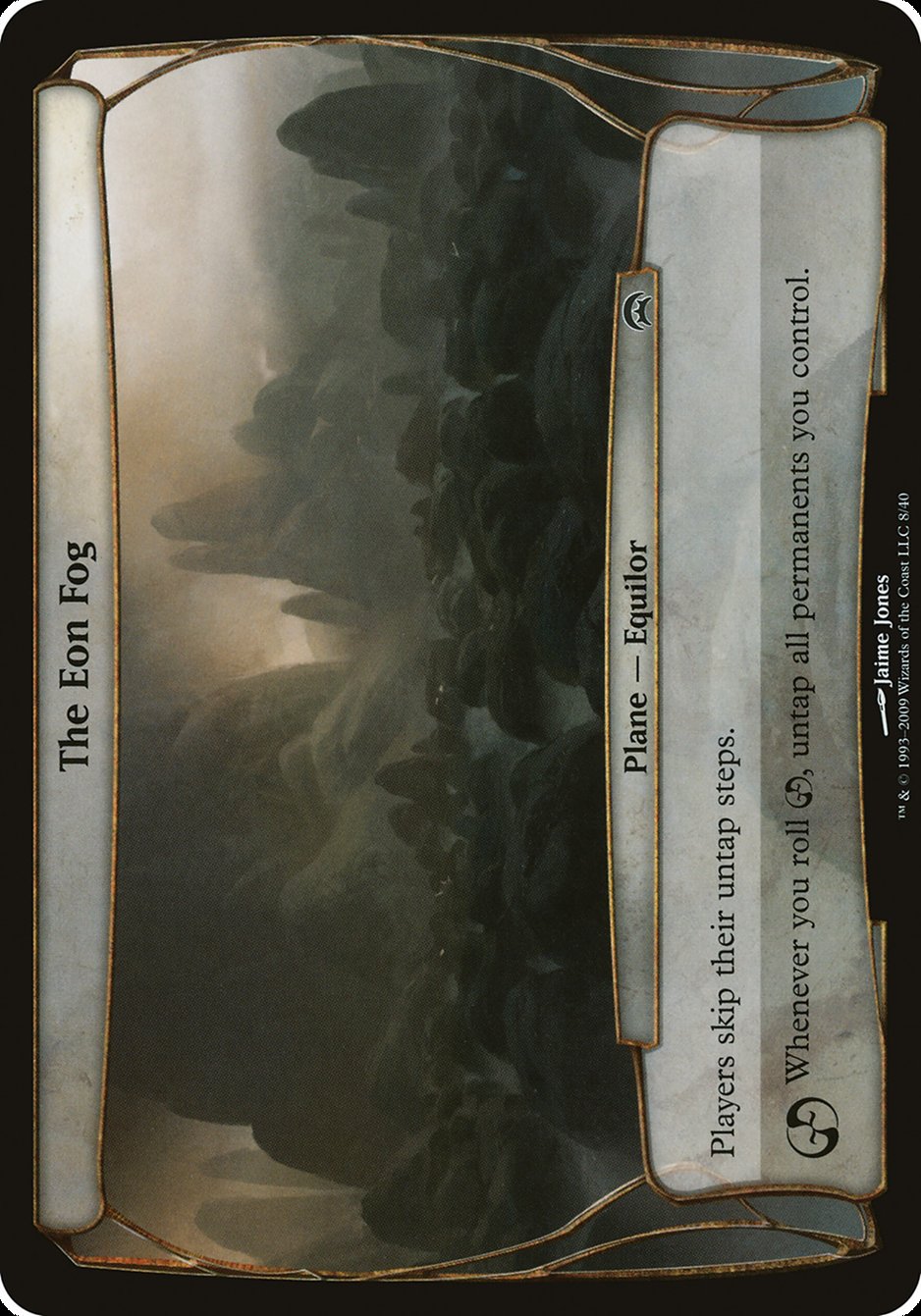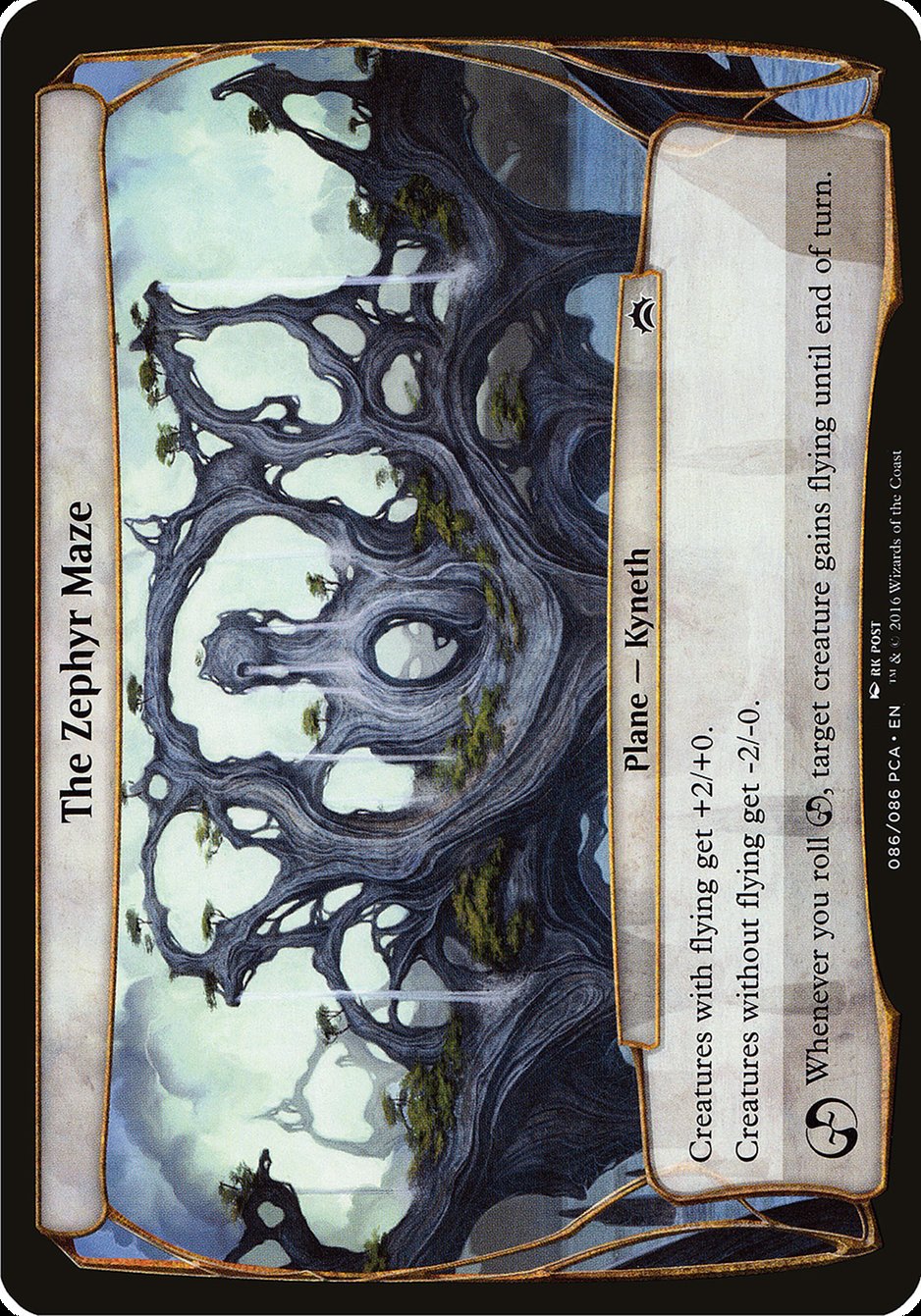Goldmeadow MTG Card
| Card sets | Released in 2 setsSee all |
| Rarity | Common |
| Type | Plane — Lorwyn |
Text of card
Whenever a land enters the battlefield, that land's controller puts three 0/1 white Goat creature tokens onto the battlefield. Whenever you roll chaos, put a 0/1 white Goat creature token onto the battlefield.
Cards like Goldmeadow
Goldmeadow is a card that invokes the charm of an almost whimsical nature in Magic: The Gathering. When one thinks of cards that offer similar vibes and utility, cards like Elfhame Sanctuary come to mind. Both exude a serene sense of place but serve players with different strategies in their deck construction. Goldmeadow, specifically, is part of the lands category, thus it can be played as your land drop and become a reliable source of mana from the get-go.
Moving into a similar realm, Selesnya Sanctuary is another land card that resonates with the idea of a dual land card, like Goldmeadow. Selesnya Sanctuary allows you to tap for two types of mana but comes back to hand once played, slightly delaying the advantage. Contrastingly, Goldmeadow offers immediate access to mana and embodies an idyllic pasture theme that can support creature-based tactics efficiently without the tempo loss.
Thus, in the vast and enchanting world of MTG, Goldmeadow holds its ground with its instant mana availability and thematic depth. It provides a unique blend of both world-building and strategic value for players looking to enhance their gameplay experience with a touch of serene landscape.
Cards similar to Goldmeadow by color, type and mana cost
Card Pros
Card Advantage: Goldmeadow is a unique card that can significantly boost your hand by creating various token creatures. This ability can be leveraged to outpace your opponents by multiplying your board presence and options each turn, ensuring you’re constantly replenishing your resources and never falling behind in the count.
Resource Acceleration: The card’s capacity to generate multiple tokens is akin to resource acceleration. These tokens can be instrumental in ramping up your mana base, especially in synergistic decks that benefit from numerous creatures or tokens on the battlefield, making it a key asset in speeding up your gameplay and outmaneuvering the opponent.
Instant Speed: The flexibility of Goldmeadow being castable at instant speed cannot be overstated. This feature allows savvy players to react on the fly, adapt to opponents’ actions, and optimize the timing of their strategies. It ensures that they can wait for the most opportune moment to unleash the card’s potential, making it a strategic tool in any duel.
Card Cons
Discard Requirement: Goldmeadow is unique in that it requires you to discard another card prior to reaping its benefits. This can pose a significant setback, particularly if your hand is already running thin and you’re in dire need of maintaining card advantage on the battlefield.
Specific Mana Cost: This card demands a precise mana setup to be cast effectively. Its specific mana cost necessitates a commitment to both color and timing, which could potentially clash with your deck’s mana curve or strategy, reducing its overall flexibility within the game.
Comparatively High Mana Cost: Boasting a hefty mana expense, Goldmeadow may place you at an unfavorable position when it comes to economy of resources. As players strive for efficiency, the mana investment required for Goldmeadow might seem excessive when other options for land or creature abilities might offer more immediate value or less strain on your mana reserves.
Reasons to Include Goldmeadow in Your Collection
Versatility: Goldmeadow brings a level of adaptability to your gameplay by offering a land that can seamlessly integrate with various deck types. Its ability to produce any color of mana when used with creatures that share a type makes it a strategic addition for tribal decks.
Combo Potential: This card’s inherent synergy with creature-focused strategies allows for interesting combinations. It becomes not just a land, but also a potential enabler for powerful turn sequences, particularly in decks designed to capitalize on creature types.
Meta-Relevance: In a game where the tides of the meta shift with each tournament, a card like Goldmeadow maintains relevance. Its ability to fix mana in creature-heavy decks means it can be a crucial component in facing off against diverse arrays of popular deck strategies.
How to beat
Goldmeadow is a unique card that creates a playful dynamic in the realm of Magic: The Gathering. Its ability to produce Goldmeadow Harrier tokens offers a strategic avenue for board control, reminiscent of cards that focus on populating the battlefield. Yet, for those facing this card, the approach is straightforward: sweep the field or continually remove creatures. A single Wrath of God can reset the board state, stripping the advantage Goldmeadow brings with a vast number of tokens. Spot removal, however, is less effective due to the card’s propensity to generate multiple tokens.
Board control strategies such as Goblin Chainwhirler or Pyroclasm can also be advantageous against Goldmeadow, as they deal damage to each creature, efficiently managing the swarm of Harriers it creates. On the other hand, Engineered Explosives offers a more nuanced but highly effective tool against token strategies, often wiping the entire Goldmeadow assembly at a minimal cost.
Thus, opponents looking to counter Goldmeadow should prioritize cards that can address multiple targets, keeping the board clear and undermining the card’s token-generating utility. A proactive stance with sweepers or adaptable removal spells works wonders against the prolific Goldmeadow playstyle in MTG.
Where to buy
If you're looking to purchase Goldmeadow MTG card by a specific set like Planechase Planes and Planechase Anthology Planes, there are several reliable options to consider. One of the primary sources is your local game store, where you can often find booster packs, individual cards, and preconstructed decks from current and some past sets. They often offer the added benefit of a community where you can trade with other players.
For a broader inventory, particularly of older sets, online marketplaces like TCGPlayer, Card Kingdom and Card Market offer extensive selections and allow you to search for cards from specific sets. Larger e-commerce platforms like eBay and Amazon also have listings from various sellers, which can be a good place to look for sealed product and rare finds.
Additionally, Magic’s official site often has a store locator and retailer lists for finding Wizards of the Coast licensed products. Remember to check for authenticity and the condition of the cards when purchasing, especially from individual sellers on larger marketplaces.
Below is a list of some store websites where you can buy the Goldmeadow and other MTG cards:
 BUY NOW
BUY NOW BurnMana is an official partner of TCGPlayer
- eBay
- Card Kingdom
- Card Market
- Star City Games
- CoolStuffInc
- MTG Mint Card
- Hareruya
- Troll and Toad
- ABU Games
- Card Hoarder Magic Online
- MTGO Traders Magic Online
See MTG Products
Printings
The Goldmeadow Magic the Gathering card was released in 2 different sets between 2009-09-04 and 2018-12-25. Illustrated by Warren Mahy.
| # | Released | Name | Code | Symbol | Number | Frame | Layout | Border | Artist |
|---|---|---|---|---|---|---|---|---|---|
| 1 | 2009-09-04 | Planechase Planes | OHOP | 13 | 2003 | Planar | Black | Warren Mahy | |
| 2 | 2018-12-25 | Planechase Anthology Planes | OPCA | 30 | 2015 | Planar | Black | Warren Mahy |
Rules and information
The reference guide for Magic: The Gathering Goldmeadow card rulings provides official rulings, any errata issued, as well as a record of all the functional modifications that have occurred.
| Date | Text |
|---|---|
| 2009-10-01 | A face-up plane card that’s turned face down becomes a new object with no relation to its previous existence. In particular, it loses all counters it may have had. |
| 2009-10-01 | A plane card is treated as if its text box included “When you roll {PW}, put this card on the bottom of its owner’s planar deck face down, then move the top card of your planar deck off that planar deck and turn it face up.” This is called the “planeswalking ability.” |
| 2009-10-01 | If an ability of a plane refers to “you,” it’s referring to whoever the plane’s controller is at the time, not to the player that started the game with that plane card in their deck. Many abilities of plane cards affect all players, while many others affect only the planar controller, so read each ability carefully. |
| 2009-10-01 | The controller of a face-up plane card is the player designated as the “planar controller.” Normally, the planar controller is whoever the active player is. However, if the current planar controller would leave the game, instead the next player in turn order that wouldn’t leave the game becomes the planar controller, then the old planar controller leaves the game. The new planar controller retains that designation until they leave the game or a different player becomes the active player, whichever comes first. |
